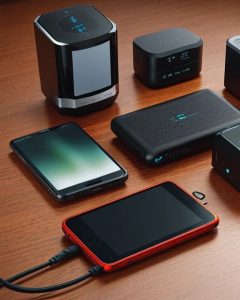The Internet of Things (IoT) has become a ubiquitous term in today’s digital age, referring to the vast network of interconnected devices that are embedded with sensors, software, and other technologies. This network allows these devices to collect and exchange data, creating a web of information that can be accessed and utilized in various ways. From smart home appliances to industrial machinery, IoT has transformed how we interact with the physical world, blurring the lines between the digital and physical realms.
One of the key advantages of IoT is its ability to enable real-time monitoring, automation, and optimization. With sensors and software embedded in devices, data can be collected and analyzed in real-time, providing valuable insights and improving decision-making processes. For example, in a smart home, IoT devices such as thermostats and lighting systems can be controlled and adjusted remotely, improving energy efficiency and convenience for the user. In industrial settings, IoT technology can be used to monitor and optimize production processes, leading to increased productivity and cost savings.
Additionally, IoT has greatly enhanced convenience for users in various aspects of their daily lives. From wearable fitness trackers to voice-controlled virtual assistants, IoT has made it possible for individuals to access information and services with ease. This has also extended to healthcare, where IoT devices are used to monitor and track patients’ health, providing early warnings for potential health concerns.
Despite its numerous benefits, the widespread adoption of IoT has raised concerns regarding data privacy, security vulnerabilities, and interoperability challenges. With sensitive data being collected and transmitted through various devices, there is a need for robust governance frameworks and standards to ensure the protection of personal information. Additionally, as the number of interconnected devices increases, the potential for security breaches also rises, highlighting the need for stringent security measures to safeguard against cyber attacks. Furthermore, with a variety of IoT devices and platforms in use, interoperability remains a challenge, making it difficult for devices to communicate and share data seamlessly.
In conclusion, the Internet of Things has revolutionized the way we interact with the world around us, offering numerous benefits such as improved efficiency, enhanced convenience, and cost savings. However, as with any emerging technology, there are also challenges that need to be addressed, particularly in terms of data privacy, security, and interoperability. As IoT continues to evolve, it is crucial for governments, businesses, and individuals to work together to establish proper governance and security measures to fully realize the potential of this transformative technology.

